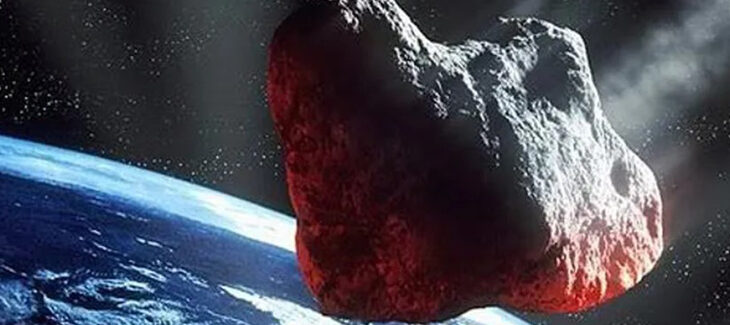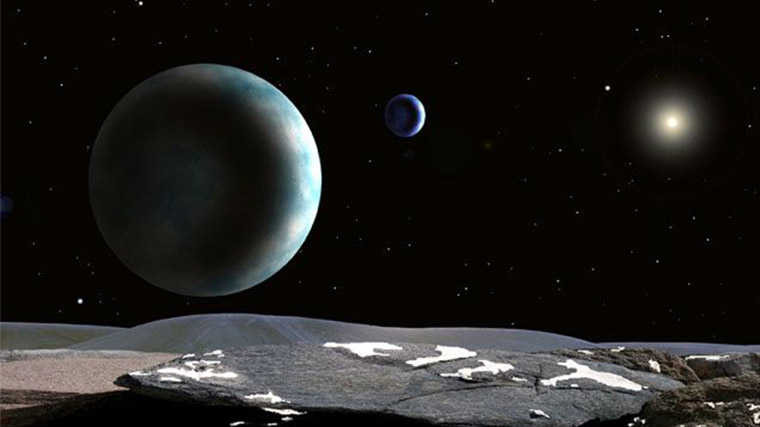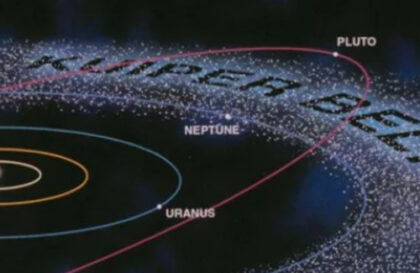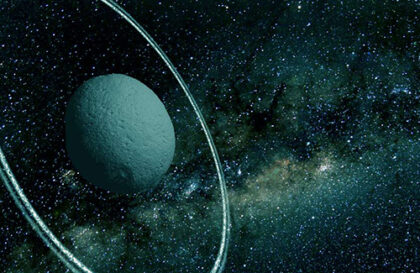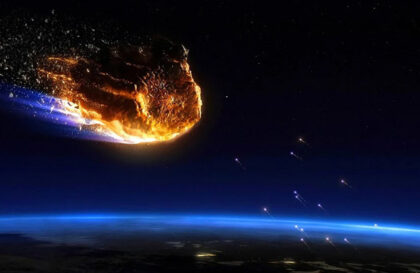NASA’s OSIRIS-REx mission probe returned more than 2 ounces (60 grams) of material from a cosmic asteroid named Bennu on September 24, 2023.
Could he, along with the material, deliver something preserved that could come to life and multiply on Earth?
This is a dead breed, and there is nothing to be afraid of
Scientists look forward to studying samples from asteroid Bennu, a remnant of the early solar system, to understand how planets formed and the possible origins of life on Earth. The end of this sentence is alarming.
However, OSIRIS-REx mission scientist Jason Dworkin confirmed that there is no reason to believe that there is anything biological on Bennu and that the brought samples have no restrictions on their study. They are considered “Unrestricted Return to Earth” Category 5, meaning no biological restrictions exist. His confidence is admirable, but the worm of doubt still eats away at brain. On what basis was he classified in this category?
Asteroid Bennu is a small, dark object with a very dry and very hot surface. Scientists have no evidence of water on the asteroid, so they expect Bennu is not the type of object that could support life.
Scientists once thought that nothing living could live at temperatures above 100 degrees Celsius. They thought so until they discovered thermophiles that successfully live at 120 degrees or more. Today, scientists know extremophiles (bacteria and microorganisms) on Earth that live in hydrogen sulfide, do not need oxygen and sunlight and feed on iron. This reduces confidence that Bennu’s samples are as pure as a tear.
As long as Bennu is in the container, there is nothing to fear
A special container protected the sample from the asteroid Bennu, collected by NASA’s OSIRIS-REx spacecraft, from overheating during its return to Earth. The return occurred at speeds of up to 30,000 mph (43,452 km/h).
A filter in the container allows air to pass through but blocks moisture, dust, and organics, preserving the sample. After landing in Utah, the sample was treated with ultrapure nitrogen. It will then be sent to the Johnson Space Center in Houston for further research in conditions that exclude contact with the Earth’s atmosphere. There will be another liquid nitrogen treatment in Houston.
Can something still come to life?
Scientists will begin analyzing the sample. The first results are expected in the coming weeks. Michelle Thompson, an assistant professor at Purdue University, notes that while they won’t find life, they are looking for building blocks that point to its possible origins. The statement was made on September 18, 2023, which is alarming.
Pieces of Bennu will be distributed around the world
The further plan looks even more frightening.
Over the year, samples from Bennu will be sent to 200 scientists for analysis. Like some lunar samples from the Apollo missions, 70% of Bennu’s samples will be preserved for future study using techniques unknown today. Samples will be frozen.
Dworkin emphasizes that the key goal is to prevent terrestrial contamination of the sample so that the analysis shows data from the asteroid and not from Earth.
Pieces of Bennu have been on Earth for a long time
The asteroid Bennu approaches Earth every September, causing meteor showers in the southern hemisphere. In 2019, scientists searched for fragments of this asteroid in Australia, Chile, South Africa, and several other countries but did not find convincing evidence of their origin from Bennu.
Dworkin clarified that there is no life on Bennu, and even if there was, it is already present on Earth, so there is no reason to worry. This is a calming thought.
The degree of calm is enhanced by the knowledge of the fact that samples of lunar soil delivered 50 years ago turned out to be uncontaminated with alien life. Last year, NASA Goddard Space Flight Center scientists began studying these frozen samples using new techniques. Lessons learned from the Apollo and other missions have advanced science in sample protection, emergency planning, and pollution control.
Christopher Snead, OSIRIS-REx deputy sample curator, the curation small particle handling lead, and OSIRIS-REx deputy curator, holding a preserved Moon rock in Johnson’s curation laboratory.
Credits: NASA
Where will the samples be stored?
Samples collected by the OSIRIS-REx mission will be stored at Johnson under NASA’s Astromaterials Research Office (ARES). This department has the world’s largest collection of extraterrestrial materials, including lunar samples and meteorites.
The new OSIRIS-REx curation laboratory at NASA’s Johnson Space Center undergoing preparations for completion of the glovebox nitrogen plumbing.
Credits: NASA/Nicole Lunning
The scientific team will study and analyze the samples over two years, starting in 2023. Most of the sample (at least 70%) will be preserved for further research by the international scientific community.
The new lab has special glove boxes for handling samples and the equipment for collecting these materials from the asteroid.
Curation engineers from Johnson’s ARES division finalizing installation of the x-y-rotation stage in the Touch-and-Go Sample Acquisition Mechanism glovebox in June 2023. From left to right are Neftali Hernandez Gomez and Salvador Martinez.
Credits: NASA
Some of the material collected from Bennu’s surface will be smaller than a grain of sand. The lab has special tools to handle these tiny particles in the new glove boxes carefully.
Bennu threat remains
With each flyby, Bennu gets a glimpse of Earth.
After 161 years there is a threat of occurrence. The impact may result in a powerful explosion. Shock wave, earthquakes and fires over a distance of 10,000 to 100,000 square kilometers. If an asteroid hits the ocean, it could cause a powerful tsunami.
For example, the Barringer meteorite (or Meteor Crater meteorite field) in Arizona, USA. This meteorite fell about 50,000 years ago, was about 55 yards (50 meters) in diameter, and created a crater about 1,300 yards (1.2 km) in diameter.
Computer modeling has shown that collisions with the Earth of a cosmic body with a diameter of 300 m with a kinetic energy of about 1000 Mt will lead to a thermal impact that will be felt at a distance of up to 250 miles (400 km) from the crater, within a radius of up to 125 miles (200 km) fires can occur dry tree branches, and the heat zone where buildings and clothing can ignite will reach 62 miles (100 km). The shock wave can destroy weak structures up to 620 miles (1,000 km). 10 minutes after the collision, a dust cloud will cover an area with a radius of up to 500 miles (800 km).
Banner image: European Space Agency
Image credit:
https://www.space.com
https://www.kth.se
https://www.nasa.gov
https://www.nasa.gov
https://eu.vvdailypress.com
